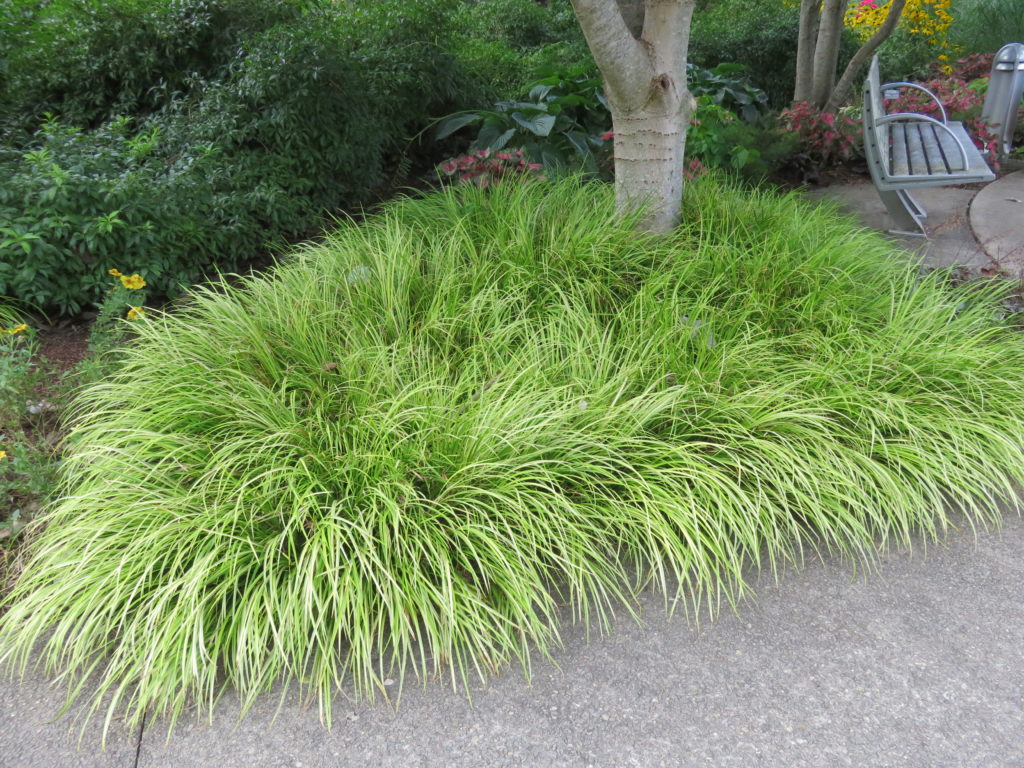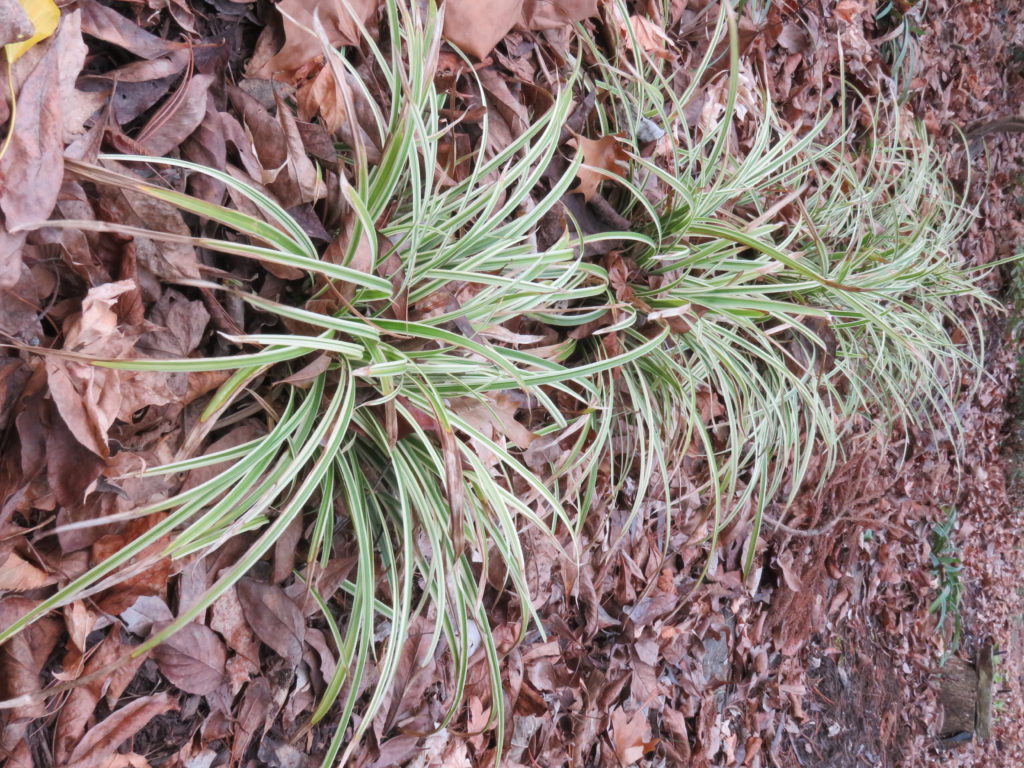
Over the past decade Japanese Sedges (Carex spp.) have become popular in U.S. gardens. Uncertain which ones to plant – here are three that are easy to grow and require little maintenance. The following three clump-forming evergreen Japanese sedges flaunt arching, green and white variegated grass-like foliage. Tiny insignificant, brown flower spikes arise on long stems in summer. All three are hardy in zones 5-9.
‘Everillo’ (Carex oshimensis) is one of seven varieties in the Evercolor® Carex series. Plants form a cascading mound of bright, lime-green leaves that turn yellow-gold as they mature. More sun intensifies the yellow, while the foliage turns chartreuse with increasing shade. Plants average 12-15 inches high x 24 inches wide and elegantly bright golden weeping foliage.

‘Ice Dance’ (Carex morrowii) enlivens the landscape with vivid deep-green centers and creamy-white margins on half-inch-wide leaves. Ice Dance spreads via slow to medium growing rhizomes into a grassy groundcover. Plants average 10 – 16 inches in height and 18 – 24 inches in spread. As an added bonus, Ice Dance maintains its cool color in winter in mild growing zones and and is semi-evergreen in colder climes.
‘Feather Falls’ (C. oshimensis) is recognized for its fountain-like green and white variegated leaves that hold its rich green color over the coldest of winters. Feather Falls sedge is new in the marketplace and may be hard to purchase at this time. The plant is a standout either grown by itself or in mixed container on a patio or deck. Feather Falls grows 16 inches high and 24 inches wide.
These clump forming perennial sedges thrive in sun and or moderate shade. Plants don’t grow much when it is hot. Plants stay evergreen where winters are mild. As previously stated, no clipping is needed. However, a rough winter may injury the foliage; if so, clip back the plant accordingly.
Divide cool season grasses in spring or early fall. Plant sedges in spring, thru summer, but no later than early October so plants don’t heave out of the ground. Feed sedges with a slow-release fertilizer (Osmocote™ or Nutricote™) at planting time and in early spring. Irrigate during dry summer periods. Sedges are deer resistant planted in garden beds, borders, woodland gardens, and containers.

 Posted in
Posted in 
